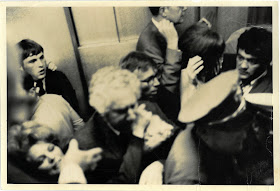 The Class of 1968 is back on campus now to lead the class of 2018 into Commencement. Fifty years ago this week, they were deep in their final exams and preparing for Senior Week. But another Dartmouth alumnus, Budd Schulberg '36, was in Los Angeles following Robert Kennedy's run for the Democratic nomination for President. That week he witnessed the second earth shattering assassination of the year.
The Class of 1968 is back on campus now to lead the class of 2018 into Commencement. Fifty years ago this week, they were deep in their final exams and preparing for Senior Week. But another Dartmouth alumnus, Budd Schulberg '36, was in Los Angeles following Robert Kennedy's run for the Democratic nomination for President. That week he witnessed the second earth shattering assassination of the year.This photograph taken by Harry Benson, shows the chaos in the kitchen of the Ambassador Hotel on the night of June 5th, 1968. The distraught man in the center with the white hair is Schulberg. Off in the right hand corner is Jimmy Breslin, who had written the famous account of JFK's funeral that was centered on the grave digger.
Schulberg and others writers had just met with Bobby on the night of the California primary. They were standing nearby when he was shot and were among the first people to rush at Sirhan Sirhan. As you would imagine the event had a lasting effect on Schulberg and he wrote about it several times.
To see the photograph and read Schulberg's thoughts on Bobby Kennedy, ask for MS-978, Box 25.


